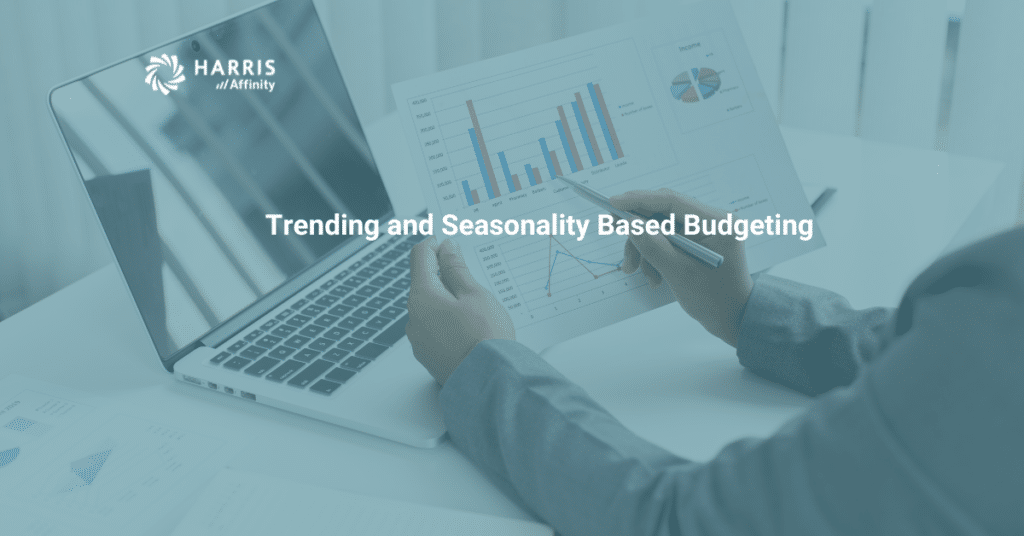Is the strategic financial planning process for your healthcare organization based in reality?
Do your plans support high quality clinical outcomes, positive patient satisfaction scores and financial growth?
To confidently answer yes to these questions, trending and seasonality-based budgeting must be a part of your healthcare organization’s strategic planning process.
What is Seasonality?
Seasonality is simply something that will repeat annually. It can be further defined as a characteristic of a time series where data shows regular and predictable changes that reoccur every calendar year. Well-designed strategic financial plans that include seasonal insights can be built based on historical data, current financial conditions, and adjustments for planned events. An example of seasonal events and cycles are winter weather conditions that can affect urgent care visits or admissions, and orthopedic procedures associated with broken bones and sprains that occur because of icy weather conditions.
For example, the CDC estimated that there were between 410,000 and 740,000 hospitalizations related to flu from October 1, 2019 to April 4, 2020. Another example is the summer season with high humidity that would have an effect on people with compromised respiratory systems. Including these insights will greatly improve the accuracy and effectiveness of a budget and set a more realistic expectation in your forecasts.
Key takeaways: Value provided by seasonality insights
- Predictable changes that occur over a one-year period
- Information that delivers insights to emerging clinical trends
- Decision support data that provides guidance to supply inventories and workforce scheduling
What is Trending in Healthcare?
Trending in healthcare is an overall direction of activities that will span multiple seasons, often as the result of changes to the status quo. Over time these trends influence activity volumes and clinical practice patterns that will alter resource utilization metrics to the point where they are no longer relative to historical information. In these instances, variance reporting will require adjustments for the budget to remain useful for decision making purposes.
An example of this, which was accelerated by the COVID-19 pandemic, is telehealth and telemedicine-based services. The trend began several years ago with a slow growth rate, as there were several obstacles responsible for the slow adoption. However, the curve of the trend spiked up in a matter of months and will have a lasting impact on future clinical practices. To put this in perspective, McKinsey & Company found that telehealth utilization has risen to 38 times the level of pre-pandemic telehealth utilization.
Other trends can be seen based on the development of new drug therapies, updates in drug cost, and changes to clinical outcomes that can reduce the demand for multiple clinical visits. Trends in healthcare like these have a major impact on long range strategic planning.
Let’s take non-COVID related hospital admissions since the beginning of the pandemic as an example. According to KFF, hospital admissions dropped to 69.2% of forecasted volumes in April 2020, but then rose to 94.2% by December 2020. The non-COVID admissions were approximately 76% of predicted volumes as of November 2020. It is imperative to understand how these trends will affect your forecast – are they temporary or do expected admissions need to be reduced in hopefully soon-to-be post-pandemic world?
Key takeaways: Value provided by trending insights
- Shifts in costs for specific service lines can be associated with changes in practice patterns and treatments
- Trends in healthcare can occur and progress at different rates based on specific events
- Adjustments are necessary to keep variance reporting and analysis between years relevant
So, what do you do with this information?
One simple and valuable example; apply these concepts to your healthcare organization’s strategic planning and budgeting processes in order to reduce the risk of overspending, especially in the area of upfront costs and long-term investments. Including trending and seasonality information in your approach to strategic planning will increase the probability of success in the form of healthy margins so that you can continue to provide quality care to the communities you serve.
Our closing perspective on strategic planning in healthcare:
If I knew yesterday, what was going to happen tomorrow, I would have planned to address it today.
Join us for our upcoming presentation where our expert team will share valuable examples through practical application of these concepts that you will be able to incorporate with your budgeting processes and strategic planning initiatives. Please feel free to contact us with any questions on how Harris Affinity can improve your healthcare organization’s strategic planning processes.
Links:

